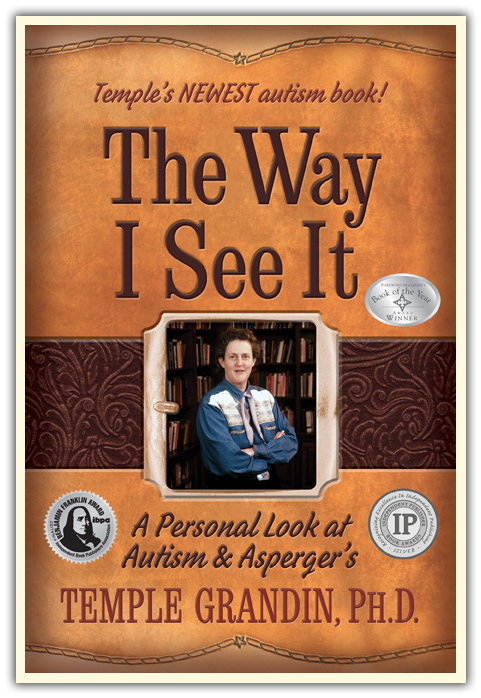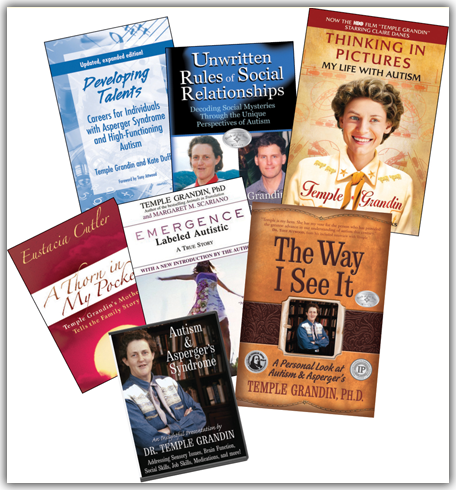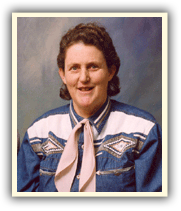Autism - The Way I See It
by Temple Grandin
Different Types of Thinking in Autism
Recent studies on the brain, and especially the brains of people diagnosed with autism spectrum disorders (ASD), are shedding light on the physiological underpinnings of our thoughts and emotions. We are gaining a better understanding of how neuropathways are formed and the extent to which biology influences behavior.
When I was much younger, I assumed that everybody perceived the world the same way I did, that everybody thought in pictures. Early in my professional career I got into a heated verbal argument with an engineer at a meat-packing plant when I told him he was stupid. He had designed a piece of equipment that had obvious flaws to me. My visual thinking gives me the ability to 'test-run' in my head a piece of equipment I've designed, just like a virtual reality computer system. Mistakes can be found prior to construction when I do this. Now I realize his problem was not stupidity; it was a lack of visual thinking. It took me years to learn that the majority of people cannot do this, and that visualization skills in some people are almost nonexistent.
All minds of the autism spectrum are detail-oriented, but how they specialize varies. By questioning many people both on and off the spectrum, I have learned that there are three different types of specialized thinking:
1. Visual thinking - Thinking in Pictures, like mine
2. Music and Math thinking
3. Verbal logic thinking
Since autism is so variable, there may be mixtures of the different types. The importance of understanding these three ways of thinking comes into play when trying to teach children with ASDs. Strategies that build on the child's area of strength and appeal to their thinking patterns will be most effective. This is most likely to become evident between the ages of five and eight. In children younger than five, it is often difficult to identify their strengths yet, unless savant skills are unfolding.
VISUAL THINKERS
These children often love art and building blocks, such as Legos. They get easily immersed in projects. Math concepts such as adding and subtracting need to be taught starting with concrete objects the child can touch. Drawing and other art skills should be encouraged. If a child only draws one thing, such as airplanes, encourage him to draw other related objects, such as the airport runways, or the hangers, or cars going to the airport. Broadening emerging skills helps the child to be more flexible in his thinking patterns. Keep in mind that verbal responses can take longer to form, as each request has to be translated from words to pictures before it can be processed, and then the response needs to be translated from pictures into words before it is spoken.
MUSIC AND MATH THINKERS
Patterns instead of pictures dominate the thinking processes of these children. Both music and math is a world of patterns, and children who think this way can have strong associative abilities. They like finding relationships between numbers or musical notes; some children may have savant-type calculation skills or be able to play a piece of music after hearing it just once. Musical talent often emerges without formal instruction. Many of these children can teach themselves if keyboards and other instruments are available.
VERBAL LOGIC THINKERS
These children love lists and numbers. Often they will memorize bus timetables and events in history. Interest areas often include history, geography, weather and sports statistics. Parents and teachers can use these interests and talents as motivation for learning less-interesting parts of academics. Some verbal logic thinkers are whizzes at learning many different foreign languages.
The thinking patterns of individuals with ASD are markedly different from the way in which 'normal' people think. Because of this, too much emphasis is placed on what they 'can't do.' While impairments and challenges do exist, greater progress can be made teaching these individuals when parents and teachers work on building the child's strengths and teach in a manner that is aligned with their basic pattern of thinking.
Temple Grandin authors "Autism The Way I See It" in every issue of the Autism-Asperger's Digest magazine. Click here to see how you can subscribe to this premier source of information for parents and professionals on autism, Asperger's and PDD.



